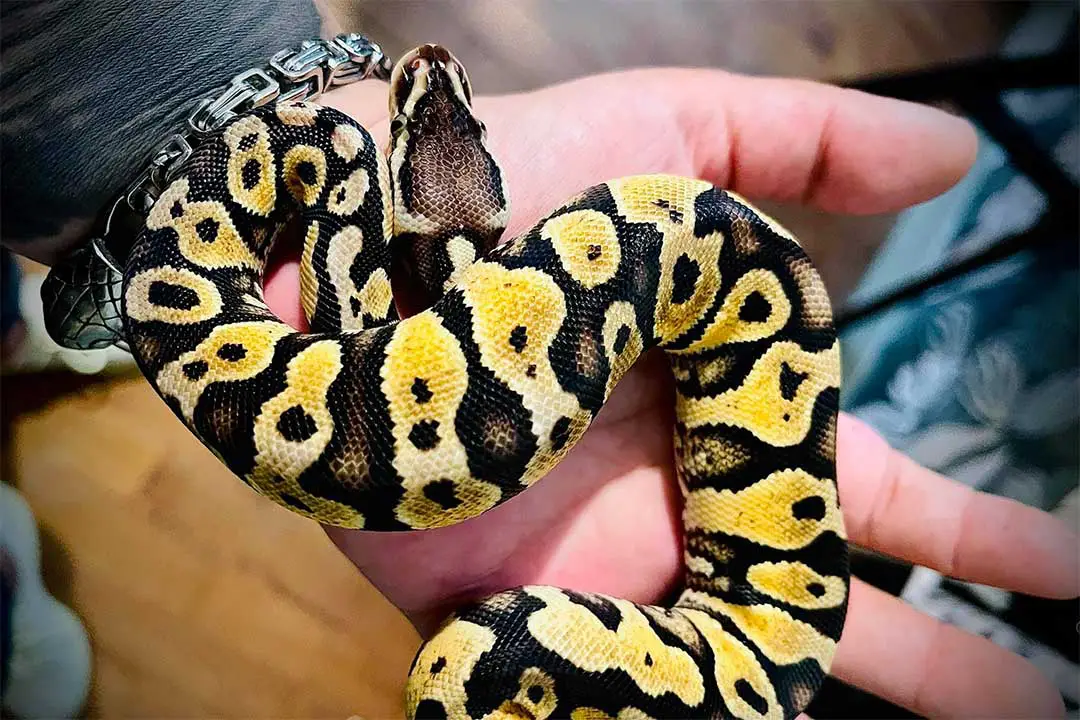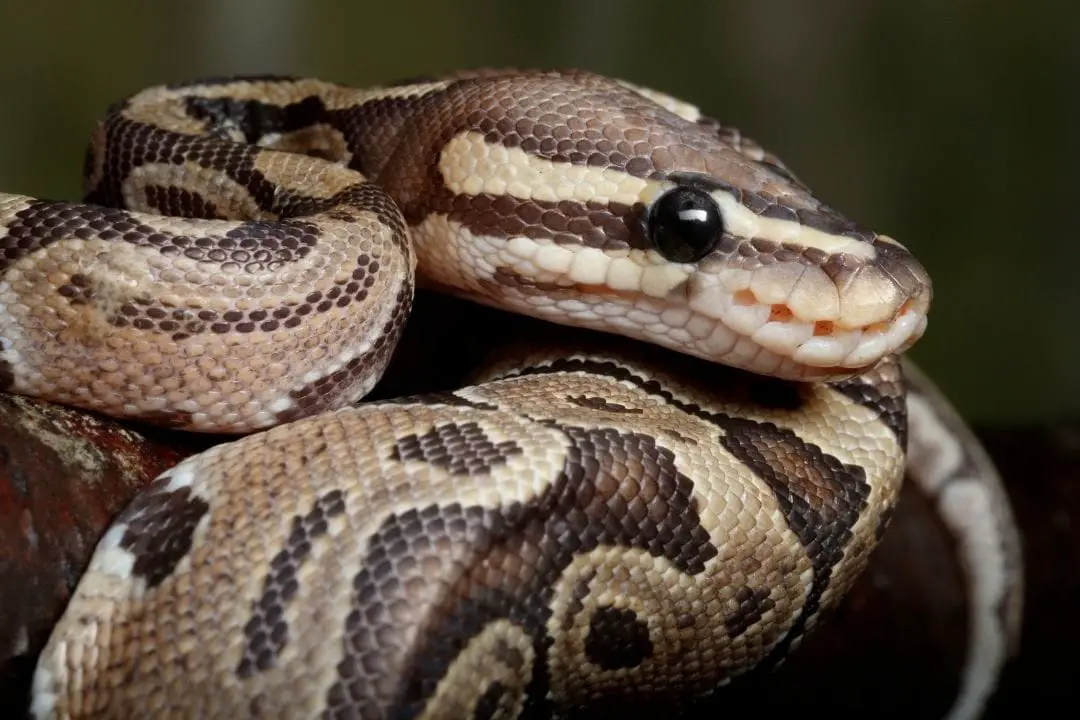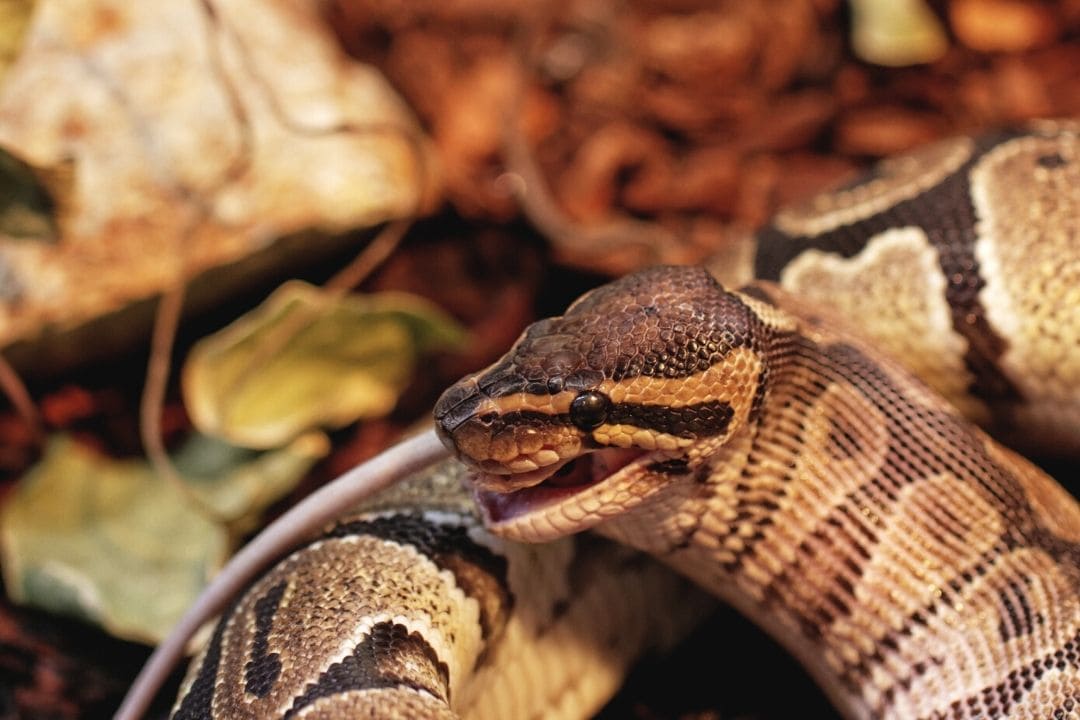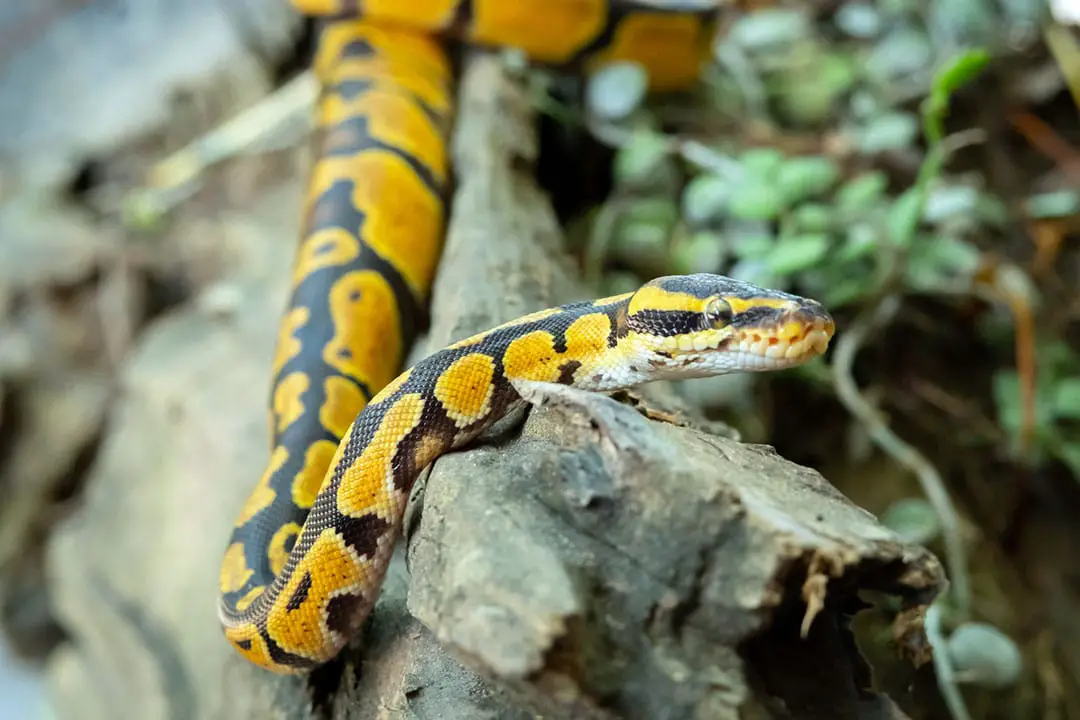Ball pythons (Python regius) are popular pet snakes. They are known for being docile snakes, Ball pythons make excellent pets for new snake owners. You may be wondering:
Do Ball pythons need to be handled regularly?
As a general rule, Ball Pythons do not need to be handled regularly, but handling them at least once a week will help keep it tame. Making sure the snake is used to handling makes cleaning and vet trips less stressful for both of you.
Natural Behaviors
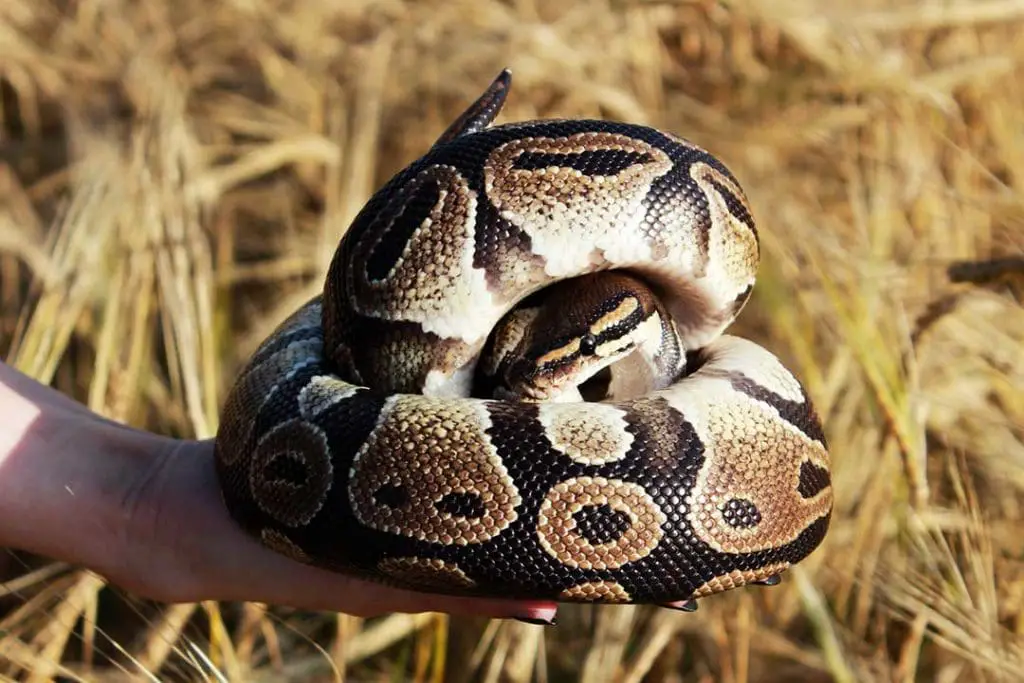
Ball pythons are shy snakes. In the wild, they are known for fleeing or balling up when they run across humans. Like most wild animals, ball pythons instinctively view humans as predators.
Adults are fairly calm but still prefer to be left alone. In the wild, there are few creatures that eat them. This includes humans since pythons are a food source in part of their range.
Babies and juveniles are frequent targets for many predators. Young ball pythons are naturally nervous and likely to bite if anything grabs them.
Most young ball pythons spend most of their time in the trees to try to avoid predators on the ground.
They need lots of shelter to feel secure in the wild. Snakes in the open will try to get under cover as fast as they possibly can.
In Captivity
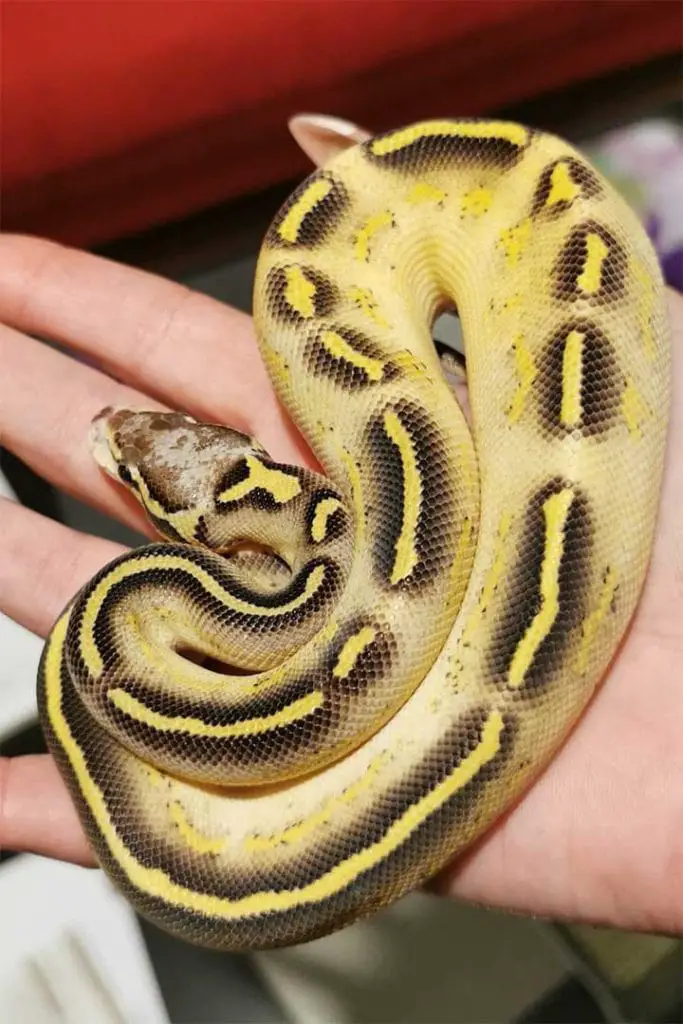
Since ball pythons are not domesticated, they follow their wild behaviors even in human care. They are very easily stressed out. Too little shelter or exposure to potential predators stresses out ball pythons.
Babies and juveniles are nippy and defensive. All of this means that a snake that isn’t used to humans and handling is going to be stressed.
Any time you need to clean the enclosure, change the water, or take the snake to the vet will stress out the snake and likely cause a feeding strike at a minimum.
The goal of handling is to teach your snake that you won’t hurt it. By offering positive experiences when handling, the snake learns that you are not going to hurt it.
While babies can take some time to lose their nervous behavior, by the time your snake is an adult it will know that you can be trusted.
This makes basic care much easier and less stressful. Handling can also be good for snakes. While they don’t need social contact, handling sessions are a great form of exercise for the snake.
The snake has the chance to crawl on you like you are a weird tree and get more space to stretch out. This is also good for mental stimulation and enrichment since your snake can experience new sights and smells.
Ball pythons are very prone to obesity, so offering the chance to exercise is good for their health.
Handling Guidelines
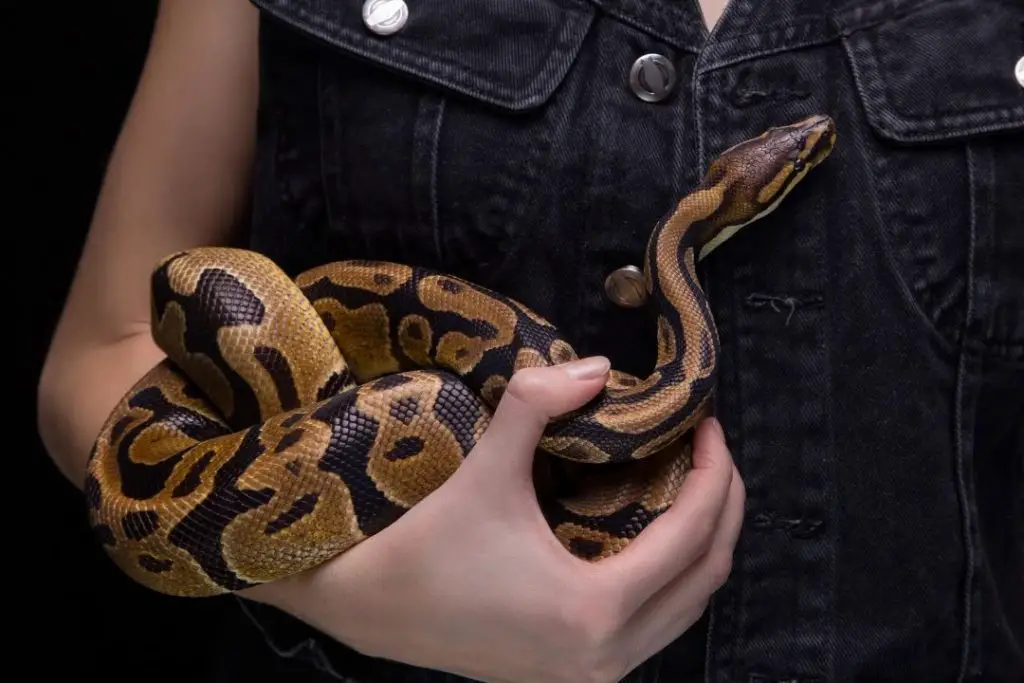
Now that you know why handling is important for captive snakes, you should know how to handle a snake. The first thing to know is that you should leave a new snake alone for at least a week before you start handling it.
Next, never handle a snake within 48 hours of a meal. Ball pythons will go on a feeding strike if you handle them before a meal.
They may also regurgitate if you try to pick them up too soon. Babies may hiss or ball up. You should still pick them up and handle them briefly at least once a week until they are tamed.
An adult that is hissing should be left alone, particularly if your snake is tame. Be prepared to be bitten by young snakes as well.
They can’t do much damage, so don’t be worried. You need to make sure to never immediately put away a snake that has bit you.
If you do that, the snake learns they just need to bite you if they are done with a handling session. Ball pythons are more intelligent than people give them credit for. They can learn patterns and schedules easily.
Always start off by washing your hands and using hand sanitizer. This helps prevent the spread of disease and makes sure your hands smell nothing like food.
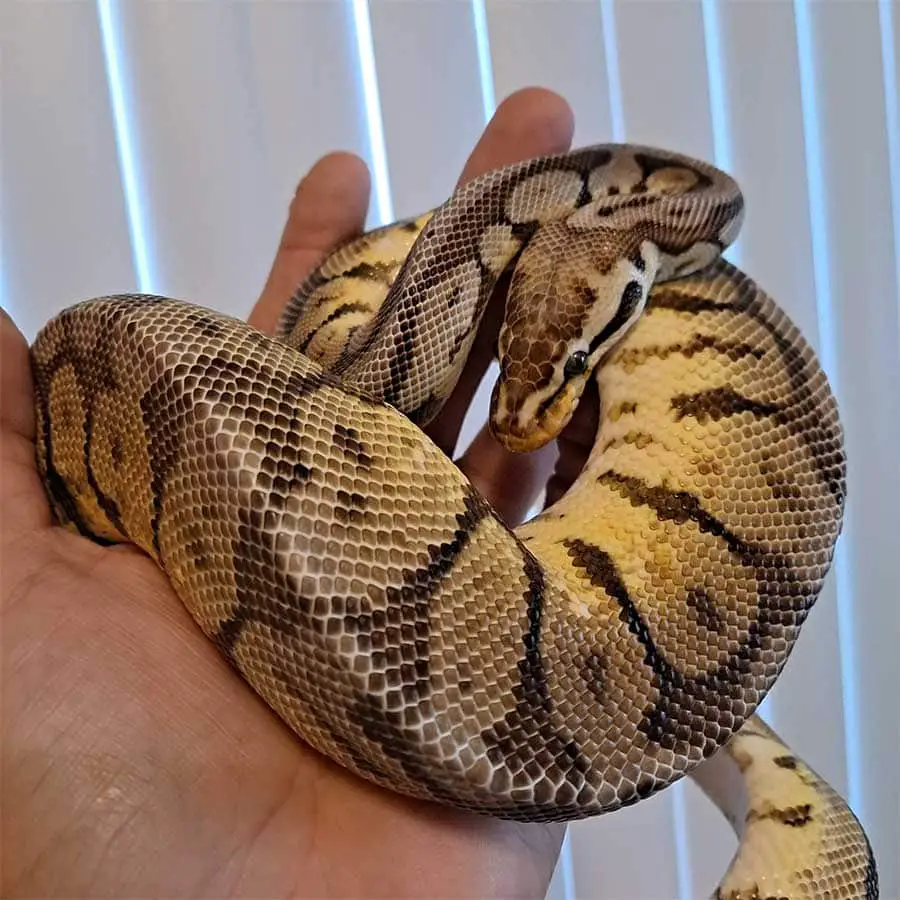
If you have been handling other animals make sure you change your clothes too. The easiest way to start a handling session is by tapping your snake with a snake hook or a paper towel tube.
A gentle touch lets the snake learn a reliable signal that it is not mealtime. Once you are sure your snake is awake, gently pick it up by scooping it from below.
Support the snake’s body by keeping one hand under the neck and another at the mid-body. Never grab a snake by the tail since this can injure it.
Lift the snake gently and move slowly. Your snake will likely wrap around you to hang on. If the snake is relaxed, you will see slow tongue flicks as it scents the air and tries to examine its surroundings.
Your snake may try to reach out to areas it can see. You can gently redirect the snake by placing your hands under it. You should also be sure not to squeeze the snake.
Let it crawl over your hands and wrap around you to hang on. Keep early handling sessions short and end when your snake is relaxed. Stick with handling for 5 minutes no more than twice a week.
You can increase the length once the snake is relaxed. Try to handle at least once a week to make sure your snake stays tame. If your snake ever seems stressed or gets sick, avoid handling until it feels better.
Conclusion
Ball pythons do need some handling to make basic care less stressful.
Teaching your snake that you and other humans won’t hurt helps the snake stay relaxed during cleaning and vet visits.
If you have any questions or comments, please leave them below.
